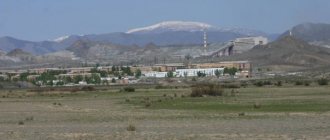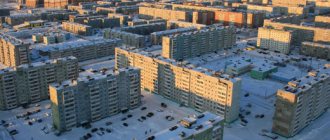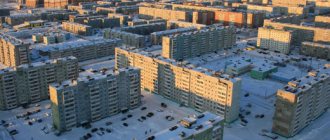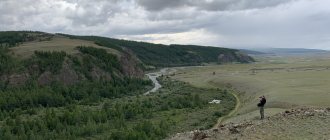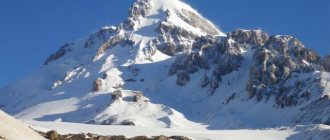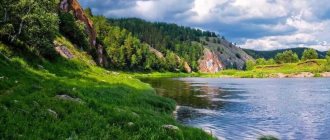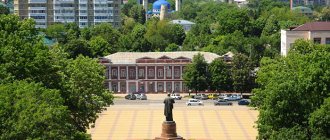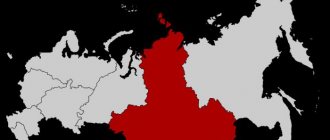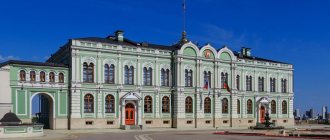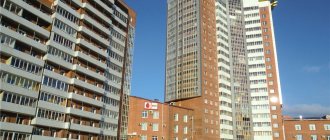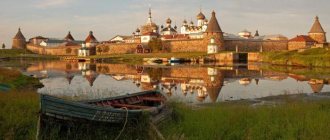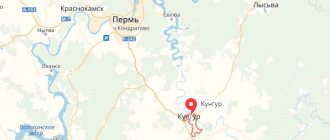The location of the republic on the map of the Russian Federation is the eastern part of Siberia. Tyva is part of the economic region of this region. The capital of the state entity is the city of Kyzyl. The total area of the republic is at least 168 square meters. km.
Due to the relief and climatic features of the region, the population density is low, equal to 1.9 people living per 1 sq. km. The data is presented based on the results of the 2021 census. The total number of residents of Tyva is 322 thousand people.
Republic of Tyva on the map
The Republic of Tyva on the map of Russia is located between such constituent entities of the Russian Federation as:
- Krasnoyarsk region;
- Buryatia;
- Altai;
- Irkutsk region;
- Khakassia.
In the south, Tyva has a state border with Mongolia. The population of the republic itself also belongs to the Mongoloid type of race.
If you look at the map, you will notice that Tyva is located in the central part of Asia. The region originates in the very upper reaches of the Yenisei River, which plays a key role in the development of the region, its provision of water resources and fisheries. The length of the republic from the south-northern direction is 420 km, and from the east-west direction - 630 km.
Language groups
The Tuvan language belongs to the Sayan group of Turkic origin of the Altai family.
The people themselves are divided into 2 groups:
- eastern;
- Western (Todzha).
Tuvans, in addition to their native language, can speak Mongolian or Russian. Some settlements speak only Mongolian (mainly southern settlements). Among the dialects there are:
- west;
- Todzhinsky (northeastern);
- southeastern;
- central.
Geography of the region
The Republic of Tyva on the map of Russia is not just one of many subjects of the Federation, forming a huge state. This is a region with many geographical features, unique nature and diverse fauna.
According to its physical and geographical characteristics, Tuva is a region with mountainous terrain, where at least 80% of the entire territory is highlands, peaks and ridge formations that shield the republic from the cold northern winds. The remaining 20% of the country's area is plains, which are used for industrial production and grazing.
In the east and northern part of Tuva there is the Sayan mountain system, the peaks of which reach 3 thousand meters. In the central part of the republic, the Obruchev ridges connect with the eastern Sayans, where the Yenisei River takes its course. Thus, the republic is completely surrounded by mountains.
At the foot of the mountain peaks there is a flat part of Derby-Taiga, on the territory of which there are about 16 volcanoes that are extinct and do not pose a threat of sudden eruption.
Number
There are just over 300 thousand Tuvans in the world. Basically, they live in the Russian Federation (264 thousand), as well as in Mongolia (5 thousand) and China (4 thousand). Among Russian lands, Tuvans are found in the following administrative districts:
- Tyva (250 thousand);
- Krasnoyarsk (3 thousand);
- Irkutsk (1.6 thousand);
- Novosibirsk (1.2 thousand);
- Tomsk (980 people);
- Khakassia (930 people);
- Buryatia (910 people);
- Kemerovo (720 people);
- Moscow (680 people);
- Primorye (630 people);
- Barnaul and Altai (540 people);
- Khabarovsk (400 people);
- Omsk (350 people);
- Amur region (310 people);
- Yakutia (200 people);
- Mountain Altai (160 people).
Water resources
The Republic of Tyva on the map of Russia differs from other constituent entities of the Russian Federation in that countless fresh water reserves are concentrated on its territory. About 90% of all rivers, lakes and small reservoirs receive water supply from the Yenisei and belong to its upper basin.
The southern slopes of the Tannu-Ola mountain ranges, as well as Sangilen, fill the basins of the Great Lakes system with melt water. They are drainless, which ensures their good flow throughout the entire calendar year.
If we consider the geographical characteristics of the republic taking into account its hydrography, it is important to note that about 430 lakes are concentrated in Tuva. Most of these reservoirs are depressions and geological faults that were formed during the Great Ice Age.
There are over 50 springs with medicinal water containing a high concentration of mineral compounds. Tuva is rich in cold and thermal springs with ferruginous, acidic, siliceous, sulfide and radon composition.
The largest are the following deposits of salt water with a high concentration of minerals:
- Ush-Beldir;
- Tarys;
- Northern Arzhaan.
All of them are of natural origin and were discovered by local residents several centuries ago in the highlands. Today, the healing springs have been improved, infrastructure and recreational facilities have been built to provide health treatments. Average temperatures of healing springs range from 50 to 85 degrees Celsius.
Seismic activity
The Republic of Tyva on the map of Russia is a region that is classified as a seismically dangerous area. There is always a high probability of an earthquake suddenly starting. This is due to the fact that under the earth’s crust there are tectonic plates that are in constant motion. During their contact, faults and layering of the lithosphere occur.
Due to these processes, the Sayan Mountains and the Obruchev Ridge system continue to grow, and local residents periodically feel the seismic activity of the earth.
Over the past 7 years, Tuva has suffered 4 large earthquakes, which occurred between 2011 and 2013. The hardest hit area was Kaa-Khmskoy, which is located 100 km from the capital of the republic, Kyzyl.
Local residents had to deal with tremors of the earth's crust, which had a power of 4.8-5 on the Richter scale. After the next 2 weeks, the aftershock effect was still present, and then the seismic activity began to decline.
Population of the Republic of Tyva
A special mortality model has formed in Russia:
- a huge gap in the average life expectancy of men and women (13 years). On average, men live to 61 years, women to 74 years;
- decreased life expectancy;
- change in the structure of causes of mortality:
- - diseases of the digestive system;
- - cancer diseases;
- -territorial factor;
- -poisoning, AIDS, suicide.
Mechanical movement of population
- movement of people for permanent or temporary residence due to natural, economic, political and other reasons.
Internal movements do not change the population of a country, but change the population of individual areas. Currently, internal migration covers 80% of the total migration turnover.
Internal migration happens:
- permanent (moving to permanent residence);
- seasonal (movement depending on the time of year);
- pendulum (regular, usually daily, movements of the population from one locality to another to work or study and back);
- and also a shift pattern characteristic of the northern regions of western and eastern Siberia was formed.
External migration is divided into:
- immigration (entry of citizens into the country);
- emigration (departure of citizens from their country to another country for permanent or long-term residence).
The main indicators of population migration for each locality or region, as well as the country as a whole, are the number of arrivals and the number of departures. The difference between these indicators (migration balance) reflects migration (mechanical) population growth or decline. As a result of comparing absolute indicators with the average annual population, the following coefficients are calculated:
- arrival rate
- Kprofit= *
1000 (10)
- retirement rate
- Kselect=*1000
(11)
- overall migration rate
- Ktot.migration= (12)
where Cm is the migration increase (Nin - Nout)
- migration turnover intensity coefficient
- Kmigr.ob= (13)
where Qm is the volume of migration (Nin + Nout)
- migration efficiency ratio
- Keff.migr= (14).
Data on the balance of migration for each locality, together with data on natural population growth, serve as the basis for calculating the population size for any date in the period between censuses.
Section 2. Population of the Republic of Tyva
2.1.Total number and categories of population
307.9 thousand people were counted during the 2010 All-Russian Population Census
permanently residing in the Republic of Tyva.
In addition, 0.4 thousand persons
who were temporarily in the territory of the Republic of Tyva and permanently residing abroad. The number of persons temporarily staying on the territory of the Russian Federation included: those who arrived in the Russian Federation (regardless of their citizenship) to study or work for a period of up to 1 year; those who arrived, regardless of the period of time, for rest, treatment, or to visit relatives or friends; transit migrants. The procedure for recording all specified categories of the population in the census complies with Russian legislation and international recommendations1.
The Republic of Tyva ranks eleventh in the Siberian Federal District out of twelve constituent entities in its composition in terms of resident population. After the Republic of Tyva, in twelfth place is the Republic of Altai, with a permanent population of 206.2 thousand people. According to the 2010 All-Russian Population Census, the Siberian Federal District ranks third in Russia in terms of permanent population - 19,254.3 thousand people, after the Volga Federal District (29,900.4 thousand people) and the Central Federal District (38,438.6 thousand people) ).
The population of the Republic of Tyva has increased
from 305.5 thousand people in 2002
to 307.9 thousand people in 2010, or by 2.4 thousand people (0.8%).
Population increase
occurred due to
natural
population growth (the excess of the number of births over the number of deaths) against the background of migration population decline throughout the entire intercensus period.
In the Siberian
Federal District,
the population decreased by 4.0 percent. Population growth is observed only in the Altai and Tyva republics.
Table3. Population of the Republic of Tyva
| of the year | 2001 | 2002 | 2003 | 2004 | 2005 | 2006 | 2007 | 2008 | 2009 |
| Whole population | 305,8 | 305,3 | 305,5 | 306,5 | 307,5 | 307,7 | 309,5 | 311,7 | 314 |
2.2.Distribution of the population on the territory of the Republic of Tyva
The change in population by region of the republic is shown in Table 4 and Appendix 1.
Table 4. Changes in population by region of the republic
| Total population, thousand people | In % of total number population | |||
| 2002 | 2010 | 2002 | 2010 | |
| Tyva Republic | 305,5 | 307,9 | 100,0 | 100,0 |
| Kyzyl | 104,1 | 109,9 | 34,1 | 35,7 |
| Ak-Dovurak | 13,0 | 13,5 | 4,3 | 4,4 |
| Bai-Taiginsky kozhuun | 12,3 | 10,8 | 4,0 | 3,5 |
| Barun-Khemchiksky kozhuun | 12,7 | 12,8 | 4,2 | 4,2 |
| Dzun-Khemchiksky kozhuun | 21,4 | 19,9 | 7,0 | 6,5 |
| Kaa-Khemsky kozhuun | 13,1 | 12,3 | 4,3 | 4,0 |
| Kyzyl Kozhuun | 22,7 | 27,6 | 7,4 | 9,0 |
| Mongun-Taiga kozhuun | 5,9 | 5,7 | 1,9 | 1,9 |
| Ovursky kozhuun | 7,9 | 7,0 | 2,6 | 2,3 |
| Pius-Khemsky kozhuun | 11,4 | 10,1 | 3,7 | 3,3 |
| Sut-Kholsky kozhuun | 8,4 | 8,0 | 2,7 | 2,6 |
| Tandinsky kozhuun | 13,8 | 12,9 | 4,5 | 4,2 |
| Tere-Kholsky kozhuun | 1,8 | 1,9 | 0,6 | 0,6 |
| Tes-Khemsky kozhuun | 8,9 | 8,2 | 2,9 | 2,7 |
| Todzhinsky kozhuun | 5,9 | 6,0 | 1,9 | 1,9 |
| Ulug-Khemsky kozhuun | 19,5 | 19,3 | 6,4 | 6,3 |
| Chaa-Kholsky kozhuun | 6,5 | 6,0 | 2,1 | 1,9 |
| Chedi-Kholsky kozhuun | 8,1 | 7,7 | 2,7 | 2,5 |
| Erzinsky kozhuun | 8,0 | 8,3 | 2,6 | 2,7 |
| For reference: | ||||
| Russian Federation | 145166,7 | 142905,2 | 100,0 | 100,0 |
| Siberian Federal District | 20062,9 | 19254,3 | 13,8 | 13,5 |
Compared to the 2002 All-Russian Population Census
Population:
— decreased in 12 regions of the republic:
Bai-Taiginsky (by 12.3%), Dzun-Khemchiksky (by 6.7%), Kaa-Khemsky (by 6.0%), Mongun-Taiginsky (by 4.7%), Ovursky (by 11.4 %), Piy-Khemsky (by 11.7%), Sut-Kholsky (by 4.8%), Tandinsky (by 6.8%), Tes-Khemsky (by 8.2%), Ulug-Khemsky (by 1.0%), Chaa-Kholsky (by 7.6%), Chedi-Kholsky (by 4.9%).
— increased in 2 urban districts and 5 regions of the republic:
Kyzyl (by 5.6%), Ak-Dovurak (by 3.9%), Barun-Khemchik (by 1.3%), Kyzyl (by 21.9%), Tere-Khol (by 2 .6%), Todzhinsky (by 1.5%), Erzinsky (by 3.2%).
Among the cities and regions of the republic, the most populated are still the cities of Kyzyl, Dzun-Khemchik, Kyzyl and Ulug-Khem, on whose territory more than 57% of the population of the republic lives.
2.3.Changes in urban and rural populations
The change in urban and rural population is presented in Table 5 and Appendix 1.
| Table 5. Changes in urban and rural population | ||||||
| Years | Total population, thousand people | including | In % to the previous population | |||
| urban population | rural population | All of the population | urban population | rural population | ||
| 2002 (as of October 9) | 305,5 | 157,3 | 148,2 | 99,0 | 109,0 | 90,2 |
| 2010 (as of October 14) | 307,9 | 163,4 | 144,5 | 100,8 | 103,9 | 97,5 |
The share of residents of urban areas increased slightly, while the share of rural residents decreased. The share of the urban population in the total population was 53.1% (in 2002 - 51.5%), rural - 46.9% (in 2002 - 48.5%).
Accessed October 14, 2010 In the Republic of Tyva there were 5 cities, including 2 cities of republican significance and 1 urban-type settlement. Compared to 2002 Only the number of urban-type settlements decreased due to the transformation of the village of Khovu-Aksy, Chedi-Kholsky district, into a village.
The permanent population in cities and towns of the republic is presented in Table 6.
Table6. Resident population by cities and towns
| Thousands of people (according to VPN-2010) | In % to VPN-2002. | |
| Kyzyl | 109,9 | 105,6 |
| Ak-Dovurak | 13,5 | 103,9 |
| Chadan | 9,0 | 94,7 |
| Turan | 5,0 | 89,3 |
| Shagonar | 11,0 | 100,0 |
| village Kaa-Khem | 15,0 | 142,9 |
During the period between censuses, the share of city residents in the total population increased in all four regions of the republic
, which include cities and urban-type settlements, these are Dzun-Khemchiksky (45.2% according to the VPN-2010 versus 44.3% according to the VPN-2002), Kyzylsky (54.3% versus 46.1%), Piy-Khemsky (49.5% versus 49.0%) and Ulug-Khemsky (57.0% versus 56.6%) districts. The population growth in the city of Kyzyl and the town of Kaa-Khem occurred both due to the excess of the number of births over the number of deaths, and due to population migration (registered and unregistered).
Over the last intercensus period, the number of rural settlements in the republic decreased by 2.7 times. These changes are mainly associated with the liquidation of rural settlements due to the lack of residents in them, as well as with consolidation (merger) with other rural settlements.
Flora and fauna
On the map of Russia, the Republic of Tyva is shown as a small entity, occupying only 0.98% of the entire area of the huge state. At the same time, the region is rich in diverse flora and fauna. Most of the fauna and flora are unique species of living organisms that have adapted to survive in harsh climatic conditions.
Amphibians are represented by 6 species, which consist of 2 orders. There are at least 7 species of reptiles. The most diverse is the avifauna, which includes about 348 species of birds. Mammals number 85 species, which are divided into 7 independent orders. The republic's flora consists of coniferous trees. Forests of this type cover at least 83% of the region's area.
According to statistics, 3 million hectares of Tuva are covered with cedar trees.
This is 11% of the total area of cedar forests in the Russian Federation. The rest of the country, if you do not take into account the bare peaks of the highlands and bodies of water, is a steppe zone. In the spring in May, wild rosemary or scientifically called Rhododendron Dahurianum blooms en masse, which is actively used in folk medicine for preparing teas, alcoholic tinctures, decoctions and ointments.
Taiga forests are represented by the following representatives of the Tuvan fauna:
- sable;
- wapiti;
- squirrel;
- boar;
- fox;
- ermine;
- Brown bear;
- elk;
- speakers;
- musk deer.
After the collapse of the USSR, most of the wildlife living in the taiga forests of the Republic of Tuva are in danger of extinction or a sharp decline in their population. This is due to the fact that a large number of sawmills and lumber warehouses that have Chinese owners open every year in the region.
According to the latest report of the World Wildlife Fund, the cutting down of coniferous trees in the Republic of Tuva is happening faster than the natural process of restoration of the forest fund.
Climatic features
Mountains play a very important role in shaping the climatic conditions of Tuva. The presence of a large number of ridge formations and mountain peaks prevents the penetration of flows of both cold and warm winds into the plain basins. In this regard, the climate of the republic is sharply continental.
Winter in the regions is long, characterized by severe frosts, the absence of gusty winds and a minimal amount of snow in the forest-steppe zone. In winter, the air temperature drops to -40 degrees Celsius. Due to windless weather, such severe frost may not be felt. In summer it is always hot with temperatures ranging from 25 to 35 degrees Celsius.
The air is very humid due to forests and a large number of reservoirs. The absolute minimum that was recorded in winter was -59 degrees, and the maximum was observed in July and reached +38 degrees. The average volume of precipitation is 200 mm in the flat part of the country, which is surrounded by mountain systems in 4 directions, and 1000 mm in the high mountain areas.
This part of the region is characterized by snowy winters and rainy summers. The weather changes very quickly, which is typical for mountainous areas. There are isolated areas of soil where permafrost occurs. In such places, the soil freezes to a depth of 1500 mm and does not thaw throughout the year. These are mainly highland areas with small plains.
The climatic conditions of the Republic of Tuva make it possible to provide plants with a natural growing season of 160 days.
Due to high temperatures and humid summers, all representatives of the flora have time to go through a full development cycle from the beginning of germination to the end of flowering with the formation of seed material, which is poured into the soil and produces offspring of vegetation the following spring.
Indigenous people of Tuva
The indigenous people of Tuvans-Todzha live on the territory of the republic. They got their name because of the area where the largest number of representatives of this ethnic group are concentrated. This is the Todzhinsky kozhuun, which has 4442 people. They enjoy a number of government benefits, since they belong to the small peoples of the Russian Federation and the Siberia region.
The native language of the indigenous people is Tuvan, but with a Todzha dialect. The main occupation of the Todzha people is reindeer herding, as well as collecting mushrooms, medicinal plants, and berries. Hunting and fishing are poorly developed. The social and everyday life of the indigenous people is based on the fact that in the summer, women go to the forest, where they collect saran flower bulbs.
During one season, a family must accumulate at least 100 kg of this product. Men herd reindeer, provide their relatives with meat, pine nuts, birch bark and skins. Clothes are made from the last two products. Before the era of industrialization, the Tuvan-Todzha people developed carpentry and the production of forged products.
Since 1990, there has been a decline in the development of reindeer husbandry.
Currently, this type of economic activity of the indigenous people of the Republic of Tyva has practically disappeared. This is evidenced by statistical data indicating that in just 10 years the number of animals has decreased from 9 thousand to 1 thousand. By 2018, the situation was slightly leveled out and today there are about 2.5 thousand deer on the farms of the republic.
The traditional housing of Todzha residents is called chum. This is a frame of 6 strong sticks that are arranged in a cone shape. The bottom is wide, and the edges meet at the top and are tied tightly with rope. The skins of deer, which were previously slaughtered for meat, or elk, caught in hunting, are stretched on top of a wooden frame. Birch bark can also be used.
The indigenous ethnic group of Tuva has its own cultural heritage, which consists of observing the traditions of their ancestors and holding celebrations on Todzha holidays.
Namely:
- Shagaa – Tuvan New Year;
- wedding cycle - a period of time when young people get married en masse;
- illumination of the place of sacrifice is a religious event aimed at appeasing the spirits who patronize reindeer husbandry;
- Khuresh wrestling is a sporting competition in which men prove their physical strength and power;
- horse racing – combined with simultaneous archery;
- Felt Festival – marks the beginning of wool processing into clothing and footwear.
The spiritual life of the Todzhin Tuvinians is based on Buddhism and shamanism, the veneration of the spirits of ancestors, and the 4 elements of nature. Related nationalities are representatives of the Altai, Turkic, Uyghur, Sayan ethnological families. The quantitative population of Todzha residents is gradually decreasing.
Traditions and rituals
Tuvans have a lot of customs that they have been using and believing in their power since ancient times. The tree that can be worshiped and considered special is called larch. It was believed that if trees were of an irregular shape or somehow grew together incorrectly, then the spirits wanted to convey something to people.
Tuvans are very hospitable. It is great happiness for them if they meet someone at home. They will definitely invite a stranger into the house, give him something to drink, feed him, talk about everything and exchange news. The treats are always the best.
On special days, holidays were held when they sacrificed an animal and asked for a peaceful sky and prosperity for the people. After the ritual, everyone danced, sang, and had fun.
If gifts were passed from one family to another, the second one never left empty-handed. Gifts and gifts symbolize love and respect.
District population
About 54% of all residents of the republics live in cities. The rest of the Tuvans live in rural settlements, engage in subsistence farming, breed reindeer, and cultivate land plots.
According to the national composition, the population of the republic is as follows:
| Nationality | Number, % |
| Tuvans | 82% |
| Russians | 16% |
| Khakass and other nationalities | 2% |
According to the birth rate index, Tyva is in 1st place among all subjects of the Russian Federation. The rates of natural population growth in relation to mortality are also quite high. Here it is in 3rd place after Ingushetia and the Chechen Republic.
Origin of the people and speech
The formation of modern Tuvans was influenced by Ket-speaking, Turkic-speaking and Mongol-speaking tribes (Uighurs, Telengits, Kyrgyz). Some researchers also mention Indo-European tribes. Everything dates back to the beginning of the first millennium, when a Turkic-speaking tribe (Central Asia) emigrated to the lands of Tuva.
Among the self-names, the most popular are Uriankhians, Soyots, Soyons or Tannu-Tuvians. The Yakuts and Khakass are considered related peoples.
Written language is Cyrillic, based on the Russian language.
Capital of Tuva
The city of Kyzyl, which as of 2021 is home to 117 thousand people, has been approved as the capital city of Tyva. The city is located in the delta of the Small and Big Yenisei. The neighboring railway station is located 390 km away in the village of Minusinsk. Construction of the republican railway branch Kyzyl - Kuragovo should begin soon.
The Republic of Tyva deserves an honorable place on the map of Russia. The capital of the republic is Kyzyl.
The capital of Tuva is divided into the following districts:
- Southern;
- Pravoberezhny;
- Oriental;
- Central;
- Mountain.
On the eastern outskirts of the city there is the largest energy enterprise in the republic - the Kyzyl Thermal Power Plant, which employs a large number of residents of the city and neighboring settlements.
The educational sphere is represented by a state university, schools, kindergartens, vocational schools and special institutions for teaching hearing-impaired children. The city has clinics, children's hospitals, medical diagnostic centers, and dispensaries.
Symbolism
The republican symbols of Tuva are the coat of arms and the flag, which were approved in 1992. The coat of arms depicts a horseman dressed in the national dress Kadak. He gallops towards the rays of the sun rising from the horizon. Above them stretches a golden inscription - Tyva.
The image is framed in a shape of 5 petals, each with its own distinctive color.
The national flag is a rectangular piece of fabric. From the side of the shaft, blue and white stripes originate, moving at an angle. The blue lines in the center of the flag form one continuous stripe. The white lines run parallel to each other. The meaning of the flag lies in the rays of the sun that warm the Tuvan land.
Tourism, attractions
The Republic of Tuva is located in the geographical center of Asia. In this honor, an obelisk was erected in the capital of the region, which contains detailed information about the location of the republic on the globe. The attraction is located on the embankment of the left bank of the Yenisei, the total length of which is 1 km. This obelisk is a source of pride for all residents of the capital.
There are 16 wildlife sanctuaries and 2 nature reserves on the territory of the republic. One of the most famous is the Ubsunur Basin. It is protected by UNESCO, but is allowed for tourists. The presence of taiga forests, which occupy most of the region's territories, determines the richness of flora and fauna.
As a tourist destination, Tuva is of interest to travelers who prefer active recreation.
Here you can go hiking in the taiga, walk along the high mountain route in the Sayan Mountains and enjoy mineral springs. The hunting grounds, which occupy more than 1 million hectares of the republic, allow the hunting of sable, bear, ermine, mountain goat, wolf, squirrel, and deer. The Republic of Tyva is home to a rare species of cat - the snow leopard, which is protected by the Red Book.
For lovers of cultural pastime, there is the Aldan Maadyr Museum. You can visit the city philharmonic or musical drama theater, which are located in the capital of the republic - Kyzyl. In the city center on Arata Square there is a large Buddhist drum for collective prayer. Is a local landmark.
Not far from the settlement of Kuragovo, marked on the map of the Russian Federation, is the Republic of Tuva. Every summer, archaeological excavations are carried out in this direction, in which anyone who wants to learn more about the ancient culture of the Tuvan people, their customs, traditions, and organization of life can take part.
Article design: Oleg Lozinsky
Tuva: Part of Russia that Russians continue to leave
In the late 1980s, Russians made up 33 percent of the population of Tuva, but today this region has surpassed Chechnya, Ingushetia and Dagestan in terms of the rate of exodus of the Russian population
Earlier this month, a representative of the rapidly thinning Russian community of Tuva - the Union of Russian-Speaking Citizens, member of the local parliament Viktor Molin, wrote a letter to Russian President Vladimir Putin and Senator Lyudmila Narusova. The leader of the state understands why, the second - because, in his words, he “keeps his word”; in addition, according to his information, he is the godfather of the leader of the country. This means that if officials from the presidential circle do not convey the contents of the letter to Putin, then she certainly will.
It sounds naive, of course, but what to do - the Russians of this nominal Russian territory have no one to count on. And they may not have heard much about Narusova’s Russophobic passages. But at the same time they really want Moscow to finally learn about their problems.
Hooliganism escalated into pogroms
“In the last decade, in the republic, due to the specific personnel policy of the Tuvan authorities in the field of public administration, a deliberate artificial process of replacing Russian personnel with persons of the titular nation has been taking place,” writes Molin. — Sholban Kara-Ool (head of the republic - Tsargrad’s note), not trusting the Russians, relies exclusively on Tuvan personnel in his activities, mostly from among relatives and friends. As a result of this, a clear imbalance has developed in the power elite of Tuva, creating discomfort for Russian-speaking citizens living in the republic.”
Head of the Republic of Tuva Sholban Kara-ool. Photo: Vladimir Gerdo/TASS
After which the author of the letter moves on to specifics:
“... After the republican State Tax Service was headed by the protege of the Tuvan government V. Suge-Maadyr, the pressure on non-indigenous entrepreneurs who were forced to curtail their business in Tuva and leave for the Sayan Mountains sharply increased. Left without work, enterprise employees are also forced to make a decision to change their place of residence and settlement in Russian regions and territories of the Russian Federation. Accordingly, Russian families – children and parents – are leaving with them. Currently, the leading Russian entrepreneurs of Tuva, Gavrilov, Gavrilenko, Safrin, Kashnikova, Mikava and others, are under tax pressure. Many abandoned their business in Tuva and left... We ask you to instruct the General Prosecutor's Office of the Russian Federation to conduct a check of the indicated facts on squeezing Russian citizens out of Tuva by putting pressure on businessmen by the tax service and evicting veterans of the Russian Defense Ministry from service apartments...”
National tensions, turning into clashes and pogroms, began in Tuva, as throughout the country, at the turn of the eighties and nineties. As if on command. There is a verbal altercation, there is a fight. And then blood was shed...
Even when there were certain acts of youth that could be called nationalistic, we only called them hooliganism,”
— Vladimir Kochergin, first secretary of the Tuvan regional committee of the Komsomol, subsequently wrote.
Recently, victims at the hands of extremist-minded youth are increasingly being admitted to the hospital,” a certain local doctor Kanunnikov echoed him from the pages of Tuvinskaya Pravda. “I lived in Tuva for thirty-three years and did not notice when the sprouts of manifestations of nationalism first appeared... The increasing frequency of brutal beatings in unprovoked fights, knife wounds with which young people were admitted to the hospital...”
In 1990, massacres began between Russians and Tuvans in the village of Khovu Aksy, built near. As a result, one and a half thousand Russians leave the settlement. The “winners” celebrate Victoria, but a year later the enterprise is closed for some reason, never to be revived...
In villages, Russian houses are being thrown with stones and Molotov cocktails. And then, that same year, the bodies of four Russian fishermen are found on Lake Sut-Khol, one of whom was only fourteen years old. The funeral of the murdered people results in a Russian demonstration of two thousand people in the capital Kyzyl, the authorities promise to look into it, but in the end, as expected, they come to the conclusion that although the victims were Russians and their killers were Tuvans, the two groups did not know each other before the crime was committed, and There was only a “domestic conflict” on the lake.
Suburb. Kyzyl. Photo: SergejStep / Shutterstock.com
After which the republic, along with many other national regions of Russia, entered the era of sovereignty, first renaming itself from Tuva to “Tuva”. And then, having written down in the newly-made constitution its “independent statist” status with the right to secede from the Russian Federation (this provision will be removed only in 2001).
Following this, mass dismissals of Russians began from the republican government apparatus and law enforcement agencies. However, the Russian head of the republican KGB will leave on his own even before all these events reach their culmination, and his place will quite expectedly be taken by a Tuvan. The Tuvan national “renaissance” was accompanied by Russian pogroms; local nationalist organizations created in the wake of perestroika, together with national organizations of homeless people and prisoners, began to attack Russian families, taking away their housing. At the same time, on the “southern front,” the Tuvans waged a war with the Mongols - the border with the neighboring country in Soviet times was rather arbitrary, not suiting either side (as well as China, which to this day considers Tuva its territory), therefore the Mongolian and Tuvan The villagers fought each other in hand-to-hand and knife fights. It even got to the point of shootings and hostage-taking.
The night is dangerous for Russians
“Nobody wants to protect us Russians here,” Nikolai Ilyin, a 70-year-old resident of the village of Sailyg, wrote back in 2004 in the only Russian newspaper of Tuva “Risk”. — So, on November 15, 2004, my house was attacked by a group of teenagers of Tuvan nationality. It’s good that my neighbors helped me, otherwise they would have killed me, like they killed the mother and son on Gornaya Street. When the police were called, the local police officer suggested that I sell everything I have and leave Tuva... I’m scared to see what’s going on in our village: the police are inactive, the prosecutor’s office doesn’t care about us either, it’s impossible to go out in the evening, there are drunken groups everywhere stoned with hashish, they begin to demand to smoke first, then, if you don’t give them money, they can mutilate you. The police will keep them for a day, and everything starts all over again. Our children go to school in a town 3 km across the mountain. Crowds meet them on this mountain, beat them and take away everything they can.”
Five years later - in 2009 - the situation has changed little.
Children in Russian national costumes. Photo: www.globallookpress.com
“Ethnic Russians living in Tyva are afraid to leave their houses in the evenings,” the Russian Observer wrote that year. — Russian business travelers coming to the republic are immediately warned: “Don’t go outside after dinner.” From time to time in Tyva, “unknown attackers” carry out demonstrative acts of intimidation against Russians. According to a journalist from one of the capital’s publications, a couple of days before his arrival, a group of Tuvan youth shouted “death to the Russians!” attacked a Russian couple leaving a bowling alley in Kyzyl. The husband was beaten to death, the wife escaped with broken bones. The criminals did not take any money or valuables. On the fence of the Orthodox church under construction in the capital of the republic, inscriptions constantly appear: “Russians, get out!” During the presidential elections, leaflets were distributed throughout Tyva: “Russians are our enemies.”
The same publication quotes the following words from the capital’s religious scholar Roman Silantiev, who returned from a business trip to the troubled region: “The outflow of the Russian-speaking population from the republic continues, and it cannot be explained only by economic reasons,” the expert said. — The crime rate in Tyva is simply off the charts, and Russian-speaking people, even in the capital, are not recommended to leave their houses after sunset. In the last three years alone, two employees of the Holy Trinity Church in Kyzyl were killed by bandits and another was severely beaten.”
Today, nine years later, in a conversation with Tsargrad, Roman Silantiev is no longer so categorical:
“Yes, Russians are leaving, but here, rather, there are economic and social reasons, there is simply no work there. There was a big construction project, a railway was being built, but then due to the construction of the Crimean Bridge it was frozen, after which there was an outflow of the population. There is practically no industry in the republic. Plus, Tuvans are quite violent when drunk, which is why domestic murders occur there quite often. Statistics on murders in Tuva are the highest in Russia. That is, it’s not even a matter of nationalism there, they kill their own people quite often, and it’s simply uncomfortable to live in the region.”
Orthodox church. in Kyzyl. Photo: www.globallookpress.com
However, the author of the letter and leader of Russian-speaking residents of Tuva, Viktor Molin, absolutely disagrees with such a statement, who is convinced that Tuvan nationalism and Russophobia still continue to rule the roost in his native land. But this process took on slightly different, hidden forms.
“Since 1991, I stopped going out into the streets in the evenings, and I still don’t go out, and all of us, Russians, have several barrels of legally registered weapons, we can defend our houses, if anything,” says the social activist. - What about young people? So she leaves. I was born and raised here, my grandmother was born here in 1906, those who came from beyond the Sayans went back in 1991, but we have nowhere to run. All ancestors are buried here. While we are here, we are indignant in response to when they create outright chaos, and when we are not there, they will do whatever they please. There are already much fewer of us than representatives of the Kyrgyz diaspora, no more than 7 percent. Kara-Ool has relatives, classmates, and godfathers in all key positions.”
Need to figure it out
Molin also says with indignation that the current head of Tuva at one time made Kaadyr-Ool Biheldey the leader of the rally passions of the 90s, in the wake of which there were pogroms and “squeezing” of apartments from Russians, as his deputy. The very fact that at the beginning of the 2000s, as the Minister of Education of the republic, he did everything so that local schoolchildren learned Russian, as if it were not their native language, according to an abbreviated program - there is such a flawed plan in the domestic educational system.
The people were indignant, saying how could he appoint such a separatist as his deputy! - Molin is indignant. “After he embezzled forty million from the construction of children’s playgrounds, he was convicted and given three years’ probation. Now he works as the director of a large museum. And recently received a state award. We have such a situation that sometimes you just don’t understand what’s in the minds of those people who are now at the helm.”
Indeed, sometimes the reality of Tuva cannot be understood with the mind. So, in 2016, the 55th separate motorized rifle brigade of the Russian army was relocated here. Now it is almost entirely staffed by Tuvans. That is, a region with obvious separatist tendencies received, in fact, its own mono-ethnic military formation.
“In principle, I am against the creation of mono-ethnic military units,” Rostislav Antonov, a Siberian and chairman of the board of the Civil Patrol Foundation, commented on the situation to Tsargrad. “And it should be noted that there have already been incidents between the Russian military and the Tuvan military. For example, last year, when a stabbing occurred in a military unit in the Urals between 60 Tuvan contract soldiers and a hundred Russian soldiers (the formal reason for the massacre was an officer’s remark to a Tuvan contract soldier who had carelessly made his bed - Tsargrad’s note), during which twelve people were injured. This is an alarming fact. “I have serious doubts about the controllability and combat effectiveness of such units.”
Monument "Center of Asia" in Kyzyl. Photo: www.globallookpress.com
Antonov is also confident that Molina’s letter to the central authorities should be taken seriously.
The situation in the Republic of Tuva is discussed regularly, but not loudly, since this topic is quite acute and painful: it concerns interethnic relations, the social activist said. — I am inclined to believe that the facts contained in the address of the head of the local Russian community contain a lot of objective information. This is not just an emotional cry from the soul, but a message to the state, and it is necessary to hear it and take measures so that the situation in the North Caucasus does not repeat in Tuva - a region that the Russians, in fact, abandoned, which led to the problem of maintaining stability in this part of the Russian Federation. Federation. Yes, the state should respond to this call, but not in terms of carrying out checks on the activist himself, but investigating what is happening with Russians in the region, whether there are violations of the rights of citizens based on nationality and ethnic bias in recruitment to the civil service.”
Russian social activists in Tuva say that there is. For example, they say that Russian doctors are being fired in order to “clear the way for national personnel.” Or, when choosing whether to hire a Russian or a Tuvan for a particular position, employers will choose the latter. All these statements require careful verification.
After all, Tuva today is an almost 100% subsidized region from the federal budget. It is absurd to spend funds earned by Russian taxpayers on Russophobia. It’s absurd if anyone doesn’t understand, if only because Tuva is also Russia.
